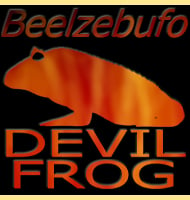Beelzebufo
In Depth The chunky body and wide mouth of Beelzebufo meant that this prehistoric frog could have gulped down almost any small lizard or mammal that was unfortunate to come across it. Beelzebufo likely would have hunted on dry land and been a ‘sit and wait’ predator. This would involve Beelzebufo relying upon its colouration … Read more
